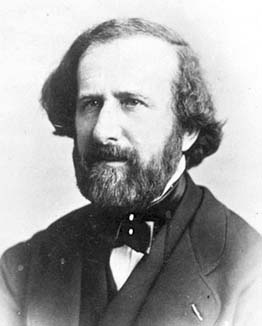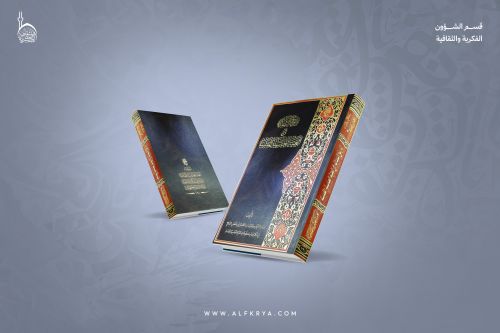

تاريخ الرياضيات

الاعداد و نظريتها

تاريخ التحليل

تار يخ الجبر

الهندسة و التبلوجي


الرياضيات في الحضارات المختلفة

العربية

اليونانية

البابلية

الصينية

المايا

المصرية

الهندية


الرياضيات المتقطعة

المنطق

اسس الرياضيات

فلسفة الرياضيات

مواضيع عامة في المنطق


الجبر

الجبر الخطي

الجبر المجرد

الجبر البولياني

مواضيع عامة في الجبر

الضبابية

نظرية المجموعات

نظرية الزمر

نظرية الحلقات والحقول

نظرية الاعداد

نظرية الفئات

حساب المتجهات

المتتاليات-المتسلسلات

المصفوفات و نظريتها

المثلثات


الهندسة

الهندسة المستوية

الهندسة غير المستوية

مواضيع عامة في الهندسة

التفاضل و التكامل


المعادلات التفاضلية و التكاملية

معادلات تفاضلية

معادلات تكاملية

مواضيع عامة في المعادلات


التحليل

التحليل العددي

التحليل العقدي

التحليل الدالي

مواضيع عامة في التحليل

التحليل الحقيقي

التبلوجيا

نظرية الالعاب

الاحتمالات و الاحصاء

نظرية التحكم

بحوث العمليات

نظرية الكم

الشفرات

الرياضيات التطبيقية

نظريات ومبرهنات


علماء الرياضيات

500AD

500-1499

1000to1499

1500to1599

1600to1649

1650to1699

1700to1749

1750to1779

1780to1799

1800to1819

1820to1829

1830to1839

1840to1849

1850to1859

1860to1864

1865to1869

1870to1874

1875to1879

1880to1884

1885to1889

1890to1894

1895to1899

1900to1904

1905to1909

1910to1914

1915to1919

1920to1924

1925to1929

1930to1939

1940to the present

علماء الرياضيات

الرياضيات في العلوم الاخرى

بحوث و اطاريح جامعية

هل تعلم

طرائق التدريس

الرياضيات العامة

نظرية البيان
Armand-Hippolyte-Louis Fizeau
المؤلف:
A D Aczel
المصدر:
Pendulum (Washington Square Press, Washington, 2003).
الجزء والصفحة:
...
19-10-2016
1358
Died: 18 September 1896 in Nanteuil-le-Haudouin, Seine-et-Marne, France

Hippolyte Fizeau was the eldest son of Béatrice and Louis Fizeau. His father Louis Fizeau, coming from a family many generations of which had been doctors, was Professor of Pathology at the Paris Medical School. It was certainly expected that Hippolyte would follow in the family tradition and enter the medical profession - anything else would have been unthinkable. He attended the prestigious Collège Stanislas in Paris where he was friendly with one of his fellow students Léon Foucault.
An important event, which was to have a marked affect on Fizeau's future, happened in September 1839. Louis-Jacques Daguerre put on a free course on his new photographic techniques in Paris and the two friends Fizeau and Foucault attended. They watched Daguerre expose a plate in a camera pointing out the window, then after talking about his process for about 30 minutes, he developed the plate using a variety of chemicals to reveal the picture. Although Fizeau and Foucault were impressed they also realised the limitations of the process - it would be wonderful to be able to take portraits, they thought, but the subject could not be expected to remain motionless for 30 minutes. After the course ended they began to experiment to try to speed up the process, and Fizeau had the idea of sensitizing the plate using bromine. Experimentation led to them reducing the exposure time from 30 minutes to 20 seconds. The discovery did not have the impact that it might, however, for other photographic methods were coming into use.
After an excellent education at the Collège Stanislas, Fizeau entered the Paris Medical School in 1840. However, he suffered severe migraines and decided to give up medicine. He spent a while travelling during which time he regained his health, then he turned to physics. He attended Arago's lectures at the Observatory, and enrolled in a course on optics at the Collège de France given by the famous Henri Victor Regnault. Fizeau had another method of building up his knowledge of mathematics and physics, which was to make a deep study of the notebooks containing the lecture notes taken by his brother who attended courses at the École Polytechnique. Arago was aware of the great scientific potential of the new methods of photography and, in particular, he was aware of the advances made by Fizeau and Foucault. He approached the two friends in 1845 and suggest that they might attempt to make photographs of an image of the sun produced by a telescope. They were highly successful and produced the first ever photograph of the sun. It clearly shows groups of sunspots.
In 1842 Doppler had published On the coloured light of the double stars and certain other stars of the heavens which presented for the first time the Doppler principle which relates the frequency of a source to its velocity relative to an observer. However, Fizeau was unaware of Doppler's work and in 1848 gave a similar explanation of the shift in wavelength in light coming from a star [2]:-
Fizeau, however, predicted that subtle displacements of the absorbsion lines in stellar spectra could be used to measure much smaller [than suggested by Doppler] celestial velocities, and the motion of the terrestrial observer, and this correct prediction underpins much of modern astrophysical inquiry.
Arago was delighted with the success of Fizeau and Foucault in photographing the sun, and suggested to them that they try to calculate the speed of light with an earth based experiment. The only previous calculation had been by Römer using the moons of Jupiter. Arago was also interested in whether light travelled more slowly or more quickly through water than through air since this was a crucial test of whether light was corpuscular or a wave. Both Fizeau and Foucault had their own ideas how to proceed and after an initial period working on this together they split up. In July 1849 Fizeau set up a mirror at his parents' home at Suresnes and another on Montmartre, the hill on the right bank of Paris. These were 8633 metres apart. Between them he set up a rapidly rotating toothed wheel and determined the speed of rotation necessary for the time taken by the light travelling between the mirrors to equal the time taken for the wheel to rotate by one tooth. He was thus the first to make a successful terrestrial measurement of the velocity of light. We know today that the value he found was almost as accurate as Römer's astronomical measurement having an error of about 5%. In April 1850 Foucault became the first to show that light travelled more slowly in water than in air - Fizeau confirmed this result with his apparatus seven weeks later. In 1851 Fizeau tried to measure the passage of the earth through the ether and achieved a negative result. This was an important first step in a rather lengthy process which eventually led to the discarding of the ether hypothesis in the early years of the 20th century. Melcher writes that [9]:-
... written testimony by Einstein exists which verifies the influence of Michelson's experiments on the former's work. Since Einstein frequently referred to the Fizeau experiment (1851) which Michelson had repeated in 1886, but more recent literature often cites Hoek's experiment (1868) instead, we finally analyze these experiments and their historical significance.
While we are considering this aspect of Fizeau's contributions, we note the interesting article [6] which discusses sealed letters by Fizeau and Foucault which were only studied in 1983. We quote from Costabel's summary:-
Sealed Letter No. 1002, deposited by Foucault on May 27, 1850 and opened on February 23, 1983, ... reveals that Foucault once collaborated in his laboratory with Fizeau in testing ether drag by transparent bodies. ... The integral text of Fizeau's memoir of September 29, 1851, when reread in the light of this first, unsatisfactory project, is indicative of a new approach. This therefore ... sheds light on the importance of a moment in history, in the intertwining of hypotheses and 'decisive' experiments concerning the undulatory nature of light and the motion of the Earth.
Fizeau was made a knight of the Légion d'Honneur in 1849. In 1853 he married Thérèse Valentine de Jussieu, a daughter of famous botanist Adrien de Jussieu; they had two daughters and one son. He had attempted to gain membership of the Academy of Sciences in March 1851. Fifty-two members of the Academy voted in a secret ballot to elect one of seven candidates. In the first round he was fourth equal with eight votes and dropped out in later ballots. Foucault, who was also one of the seven candidates, fared better but was not elected. Fizeau was elected to the Academy of Sciences on 2 January 1860, rather surprisingly before Foucault who was not elected until 1865. He had been earlier honoured by the Institut de France when it awarded him the Triennial Grand Prix on 9 July 1856. Further honours were to follow when, in particular, he was awarded the Rumford Medal of the Royal Society in 1866, then elected an a foreign member in 1875. In 1877 he became vice-president of the Physics Section of the Academy of Sciences, then President of the Section in the following year. In his Presidential address he spoke of [8]:-
... the dignity and independence of natural science as well as to its limits of action, preventing it from interfering in philosophic or social questions, and not permitting it to put itself in opposition to the noble emotions of the heart nor to the pure voice of conscience.
Also in 1878 he became a member of the Bureau des Longitudes. Thérèse died young and after this Fizeau retired to his home near Jouarre. From there he rarely went into Paris for meetings of the Academy or of the Bureau des Longitudes.
- J B Gough, Biography in Dictionary of Scientific Biography (New York 1970-1990).
http://www.encyclopedia.com/doc/1G2-2830901446.html - William Tobin, Armand-Hippolyte-Louis Fizeau, in Thomas Hockey (ed.) Biographical Encyclopedia of Astronomers (2007), 371.
- Biography in Encyclopaedia Britannica.
http://www.britannica.com/EBchecked/topic/209161/Armand-Hippolyte-Louis-Fizeau
Books:
- A D Aczel, Pendulum (Washington Square Press, Washington, 2003).
Articles:
- P Bailhache, Un effet Doppler-Fizeau méconnu: Roemer et la vitesse de la lumière, Rev. Histoire Sci. 55 (3) (2002), 411-430.
- P Costabel, L Foucault et H Fizeau : exploitation d'une information nouvelle, C. R. Acad. Sci. Sér. Gén. Vie Sci. 1 (3) (1984), 235-249.
- O Darrigol, Henri Poincaré's criticism of fin de siècle electrodynamics, Stud. Hist. Philos. Sci. B Stud. Hist. Philos. Modern Phys. 26 (1) (1995), 1-44.
- W Fox, Armand-Hippolyte-Louis Fizeau, The Catholic Encyclopedia VI (Robert Appleton Company, New York, 1909).
- H Melcher, Atherdrift und Relativität: Michelson, Einstein, Fizeau und Hoek, NTM Schr. Geschichte Natur. Tech. Medizin 19 (1) (1982), 46-67.
- J Reignier, Ether et mouvement absolu au XIXème siècle, Rev. Questions Sci. 170 (3) (1999), 261-282.
 الاكثر قراءة في 1800to1819
الاكثر قراءة في 1800to1819
 اخر الاخبار
اخر الاخبار
اخبار العتبة العباسية المقدسة

الآخبار الصحية















 قسم الشؤون الفكرية يصدر كتاباً يوثق تاريخ السدانة في العتبة العباسية المقدسة
قسم الشؤون الفكرية يصدر كتاباً يوثق تاريخ السدانة في العتبة العباسية المقدسة "المهمة".. إصدار قصصي يوثّق القصص الفائزة في مسابقة فتوى الدفاع المقدسة للقصة القصيرة
"المهمة".. إصدار قصصي يوثّق القصص الفائزة في مسابقة فتوى الدفاع المقدسة للقصة القصيرة (نوافذ).. إصدار أدبي يوثق القصص الفائزة في مسابقة الإمام العسكري (عليه السلام)
(نوافذ).. إصدار أدبي يوثق القصص الفائزة في مسابقة الإمام العسكري (عليه السلام)


















